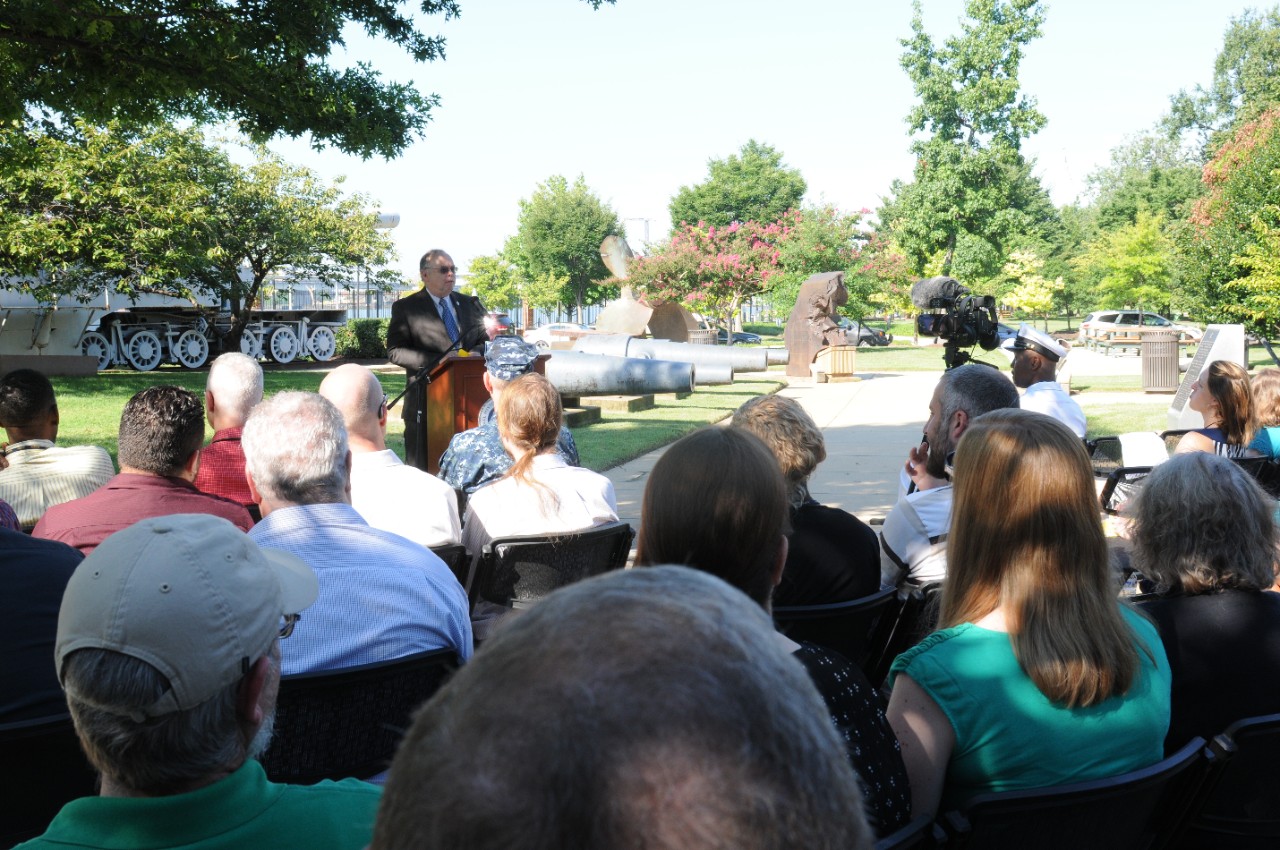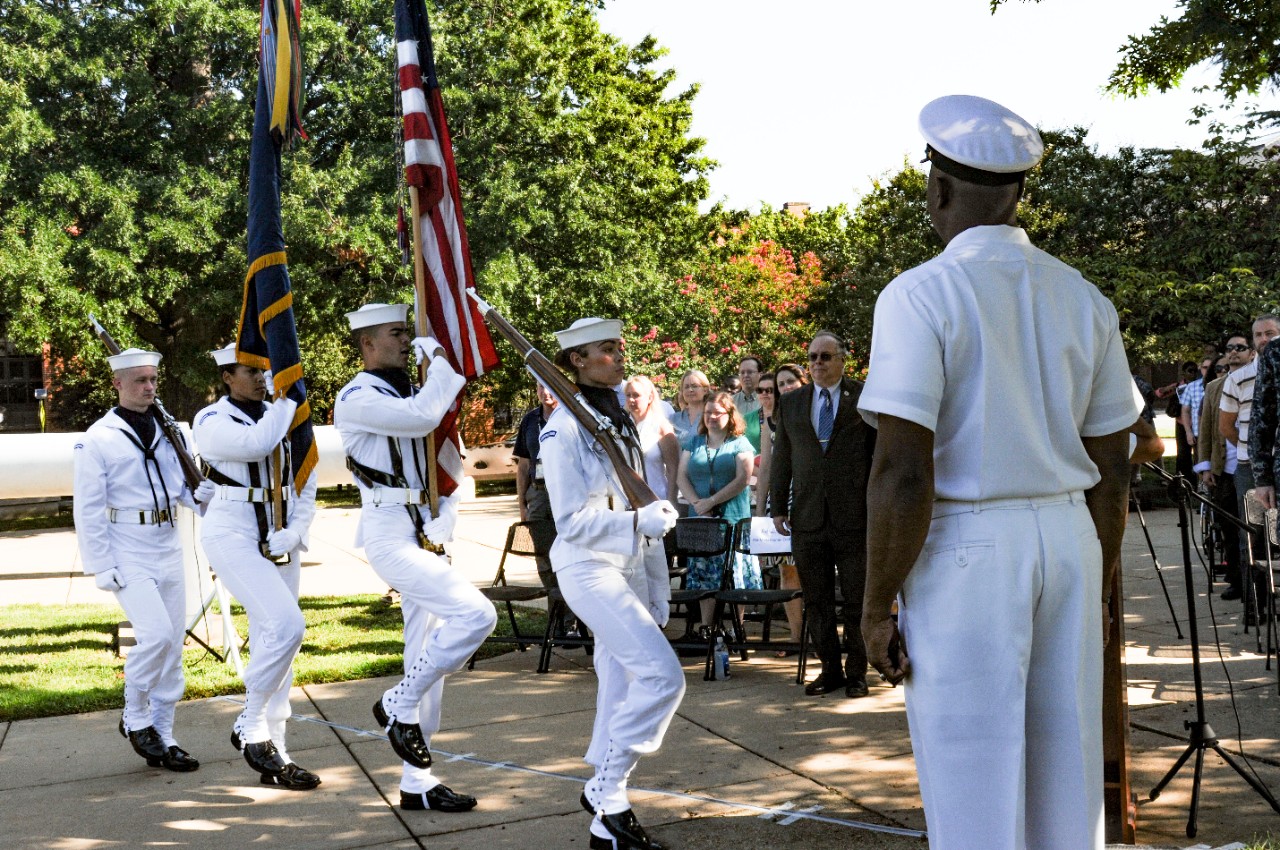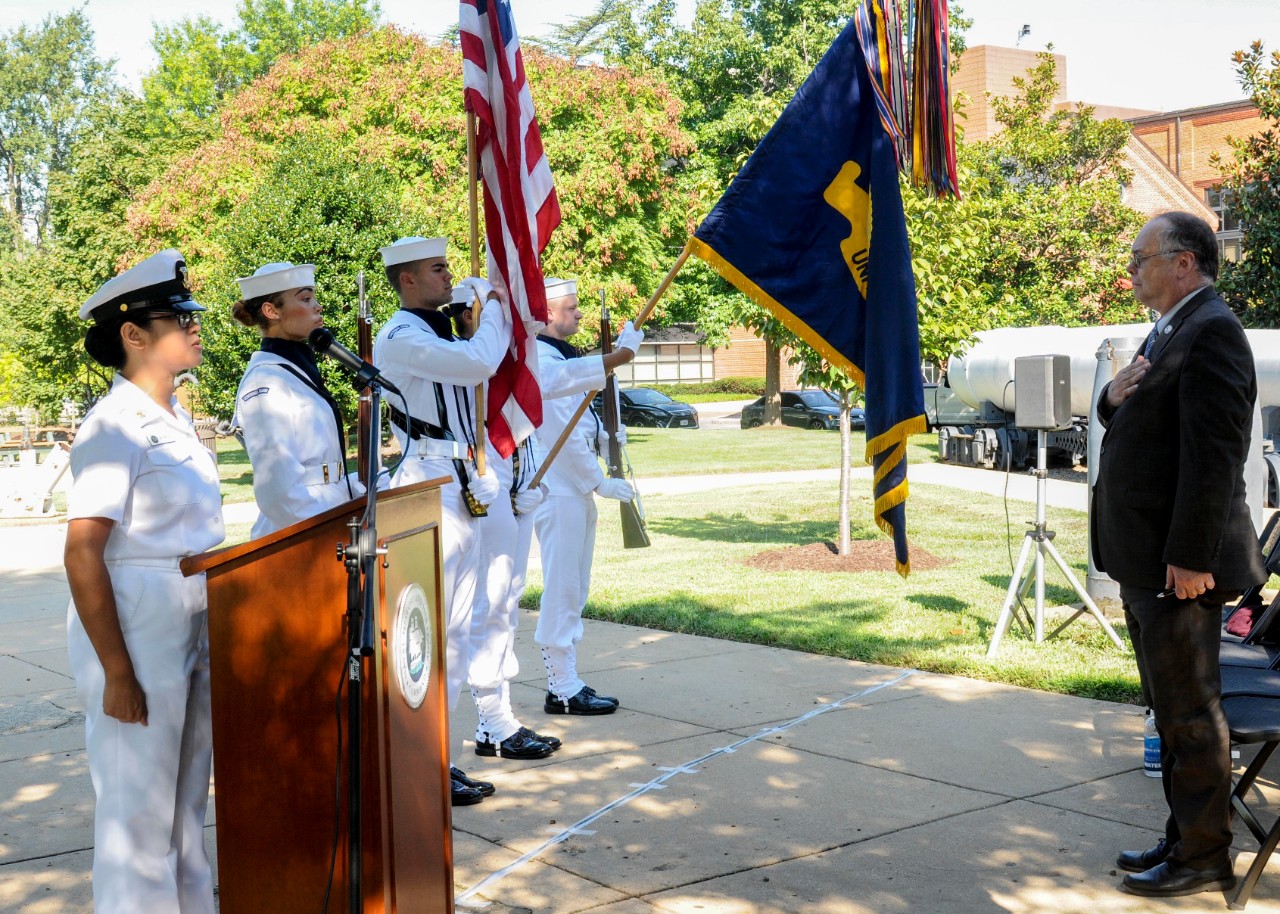By Mass Communication Specialist 2nd Class (SW/AW) Mutis A. Capizzi, Naval History and Heritage Command, Communication and Outreach Division
The ceremony took place at Admiral Willard Park at the Washington Navy Yard, where on display is a naval railway gun still mounted on a railway carriage.
Master Chief Yeoman Nathaniel Colding, senior enlisted leader at NHHC, was the master of ceremonies for the event and shared the history of the naval railway gun with the guests in attendance.
Upon entering World War I in April 1917, the Navy was already developing long-range artillery primarily to counter the German army’s heavy guns capable of bombarding the English Channel ports used by the Allies.
The Navy’s initial idea was to employ several 14-inch 50-caliber Mark IV naval rifles, with a complete train of equipment for each gun, on railway mountings behind British lines in France. However, changing military conditions prevented British authorities from stating definitively at which port these batteries were to be debarked.
The Navy ultimately offered the guns to General John J. Pershing, commander of the American Expeditionary Force, who readily accepted them.
“In the summer of 1918, five U.S. naval railway guns made the journey across the Atlantic Ocean for use in France during the First World War,” said Colding. “Although they were assigned to the First Army’s Railway Artillery Reserve, the guns operated as independent units under the command of Rear Admiral Charles P. Plunkett. In early September 1918, Battery Number 2 went into action with a bombardment of a German-occupied railroad hub more than 20 miles away.”

Retired Rear Adm. Sam Cox, director of NHHC, was the guest speaker for the commemoration ceremony and spoke about why this event is important for us to remember today.
“The U.S. Navy was able to provide a quick solution using guns that were normally intended for battleships,” said Cox. “The key point of the U.S. Navy’s participation in the war was that although we only lost about 430 Sailors during the entire course of the war, we were able to get two million U.S. Army troops to France a lot faster than the Germans ever thought was possible. The Navy did this without any losses to U-boats, ending a war that at that point was the bloodiest in human history.”
Although the naval railway guns operated well behind the front lines and were not subject to the constant bombardment received by more forward positions, the U.S. naval railway batteries were hardly immune from enemy fire. Many of the units took counter-fire from German artillery. German observation planes flew above their positions during the day, and bomber aircraft were active at night. The units lost only one Sailor to enemy fire and other battery personnel were wounded.
According to Dennis Conrad, Ph.D., a historian at NHHC, 530 officers and men made up the Naval Railway Guns command. The unit was subdivided into six groups, one for each battery and these groups were further subdivided into crews: a train crew, a construction crew and a gun crew.
While the naval railway guns were in operation, the crew had no support from the Army should the Germans unit advance on them and they were expected to “fight alone.” They did not have to face that fate, however; the Germans were in retreat throughout their period of service.
“The increased use and effectiveness of aircraft, particularly bombers, with their greater flexibility and mobility, meant that the naval railway battery would not be a mainstay in future wars,” said Conrad. “Nonetheless, its development and deployment highlights the U.S. Navy’s ability to think innovatively and create and deploy new and effective programs quickly. That skill is transferable and is a hallmark of the U.S. Navy in the twentieth century.”
The Naval History and Heritage Command, located at the Washington Navy Yard, is responsible for the preservation, analysis, and dissemination of U.S. naval history and heritage. It provides the knowledge foundation for the Navy by maintaining historically relevant resources and products that reflect the Navy's unique and enduring contributions throughout our nation's history, and supports the fleet by assisting with and delivering professional research, analysis, and interpretive services. NHHC is composed of many activities including the Navy Department Library, the Navy Operational Archives, the Navy art and artifact collections, underwater archeology, Navy histories, nine museums, USS Constitution repair facility, and the historic ship Nautilus.

For more information on NHHC visit their website at http://www.history.navy.mil/.



